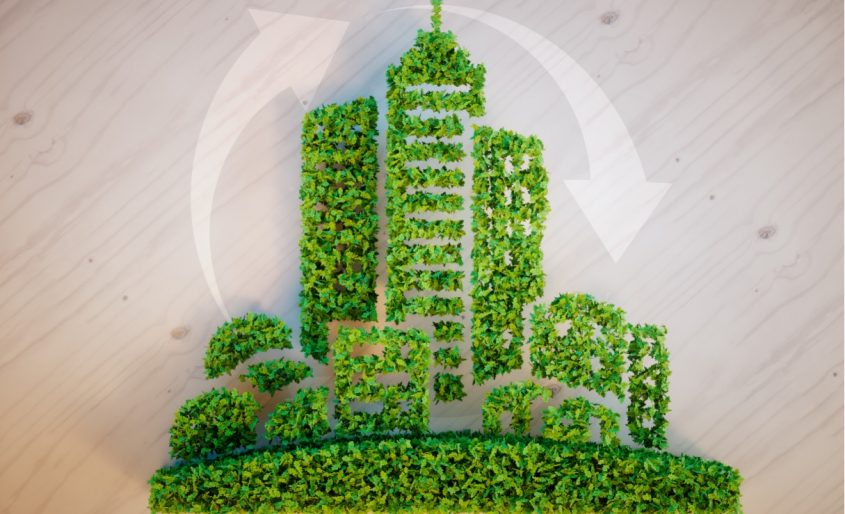The architectural profession may have evolved over the last 20 years of my career, but construction methods have largely remained unchanged. To address our global climate crisis, the construction industry needs to realize projects at every scale that meaningfully reduce our dependence on fossil fuels.
Despite progress in prefabricated or modular construction, we continue to build onsite by hand using traditional construction methods that emit high levels of greenhouse gases and contain too much embodied carbon. This way of building is not environmentally sustainable. The realization that every project we engage in will either contribute to or mitigate against the climate crisis helps us focus on achieving our ultimate goal: to design buildings that support the regeneration of a healthy planet.
Today, pursuing regenerative design – a process defined as ensuring the built environment has a net positive impact on natural systems – is possible thanks to accessible data management tools that can reduce financial risk for our clients.
Better data will also support effective regulations and codes. Our current building codes require us to design with greater energy efficiency than a generation ago, but they remain overly conservative. The simple reason is apparent: the construction industry has been slow to adapt to the realities of climate change, and clients are reluctant to spend a premium on materials or methods that meaningfully achieve carbon neutrality. Stricter regulations within the construction industry and various levels of government are required to shift the paradigm towards regenerative architecture and urban design. While the urgency to make the shift began well over a decade ago, it is only recently that the possibility of gathering accurate data and deploying efficient measurement tools have become available to architects and designers.
Unfortunately, the volume of lower-energy, highly sustainable real-estate projects has not kept pace with the massive overall rise in development in recent years. All three levels of government have proven reluctant to interrupt the robust real-estate market with stringent energy-use and performance requirements, choosing to address a shortage in housing supply and avoiding an economic slowdown. Only recently has the rise of interest rates, record levels of inflation and escalating construction costs taken a toll on the overall economy. Without the adoption of financial incentives for regenerative buildings, the expected economic slowdown resulting from these factors is unlikely to encourage a robust level of sustainable development that will limit global warming below the 1.5-degree Celsius rise in temperature outlined in the Paris Agreement adopted in 2015.
Undaunted, our firm continues to support clients in de-risking the pursuit of zero-carbon buildings. We remain optimistic in prioritizing projects that embrace natural systems and regenerative design, recognizing how and why the industry’s mindset must rethink strategies to reduce carbon emissions. By leading SvN’s regenerative practice, our transdisciplinary team is helping clients reduce the carbon footprint in all our buildings and urban design projects wherever possible. Our approach includes promoting communities connected to mass transit, conducting energy modelling that assesses lifecycle analysis and zero-carbon buildings, designing for passive house standards, transitioning to mass timber construction as a low-carbon alternative whenever possible, and leveraging carbon-reduction strategies through landscape design.
We recently worked on a new development in Cairo that relies on natural systems and materials to achieve a low-carbon community. Throughout the development, passive ventilation will cool residences, retail and community buildings, drastically reducing the need for air conditioning. At the same time, the extensive use of photovoltaic panels will produce nearly all of the community’s electricity demands. Our firm is also working on projects in Mexico, the Caribbean and the Greater Toronto Area, using data analysis to produce metrics so that clients can make informed decisions relating to regenerative design, reduce their carbon emissions, and improve overall energy performance.
We take a data-driven approach to measuring embodied carbon, energy use, and carbon sequestration. The saying goes, “you can’t improve upon what you can’t measure.” The goal of measuring and tracking embodied carbon will create virtuous cycles for our projects, allowing them to produce more energy than they consume, sequester more carbon than they produce, or be a net provider of clean water. We believe this process is attainable — and necessary — for the health of our planet.
The belief that designers have a role in healing our planet used to be considered aspirational thinking. This sentiment is no longer our reality. Amidst a global climate crisis, pursuing a regenerative approach to architecture and urban design is essential. With proven data management tools at our disposal, building a post-carbon future is viable and desperately needed from an environmental, economic and social perspective.
Aaron Budd, AIA, MRAIC, LEED AP is the director of regenerative practice at SvN Architects + Planners, leading a new firm division dedicated to integrating architecture, landscape design and planning in a holistic, zero-carbon, circular and resilient community framework.







